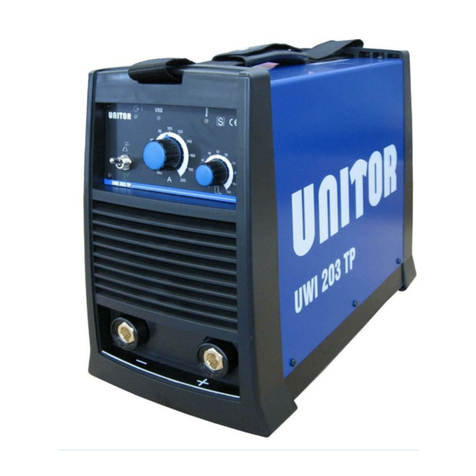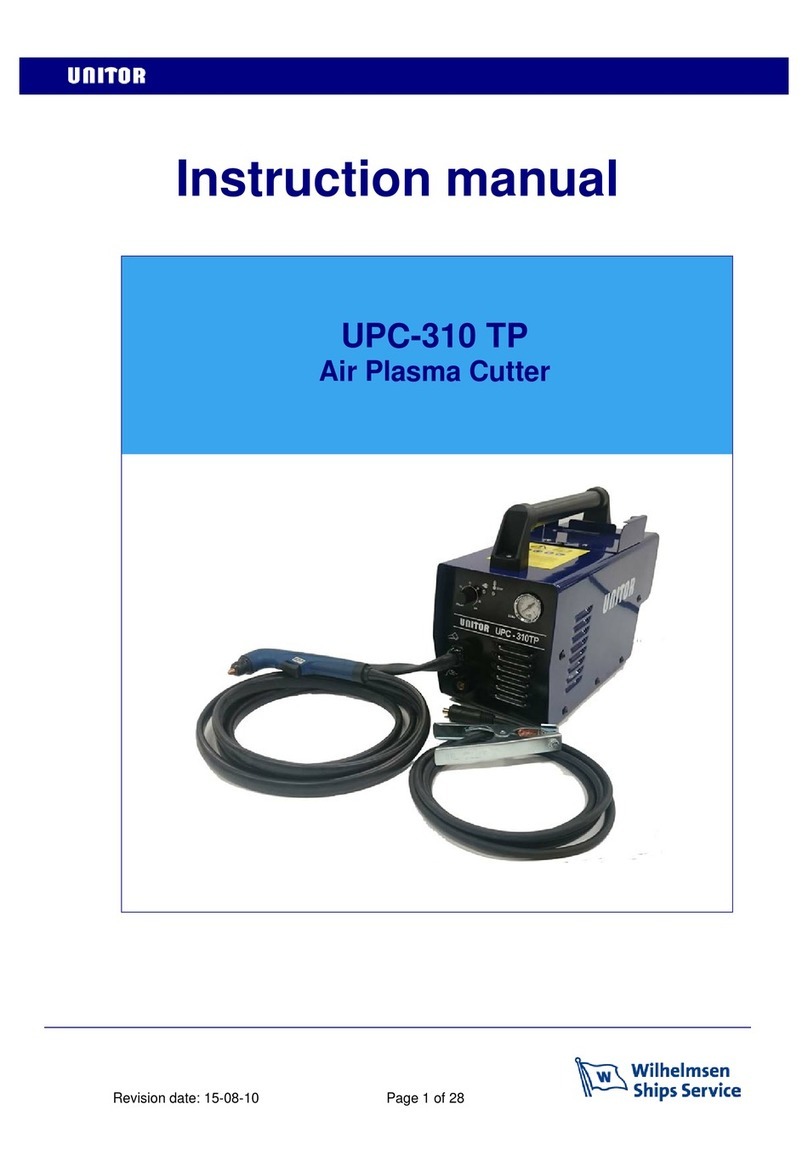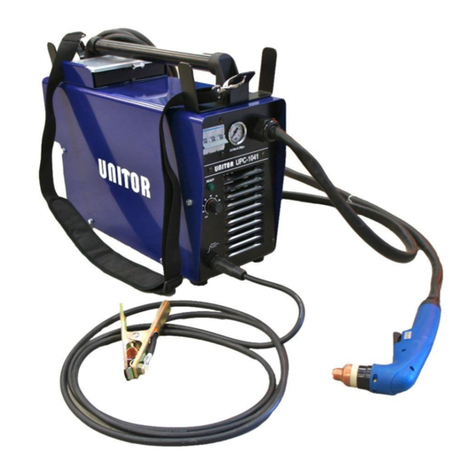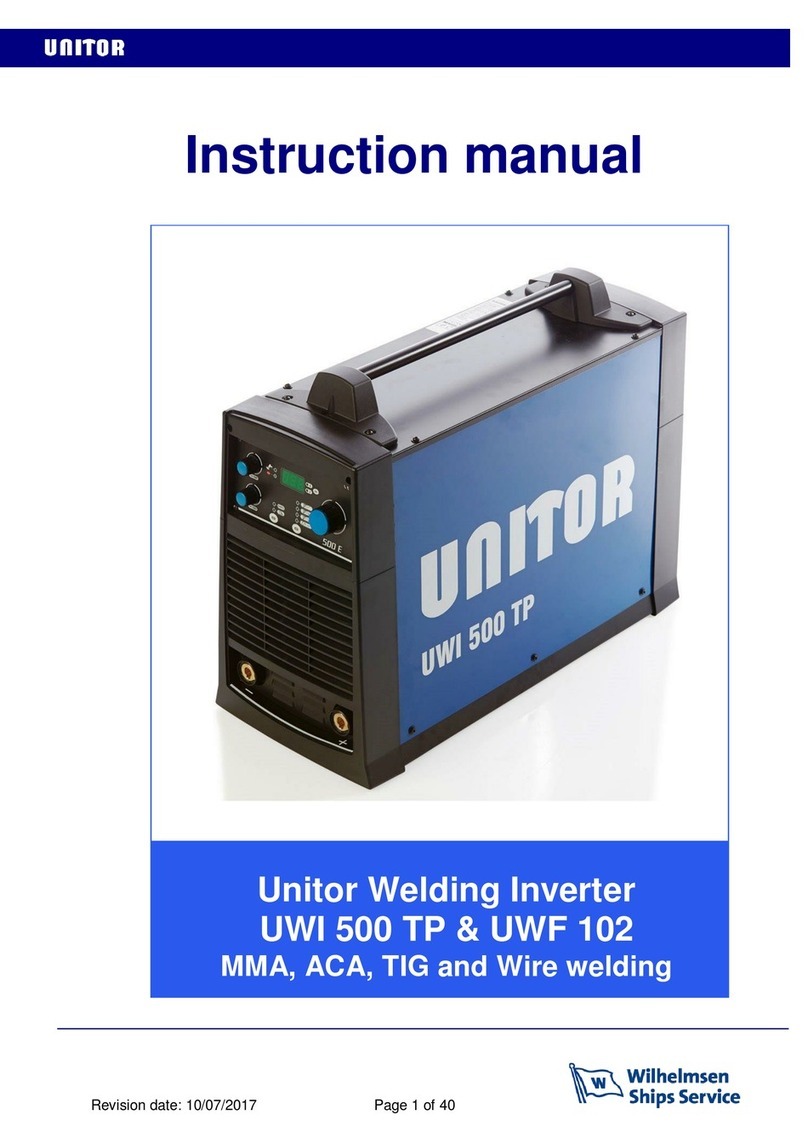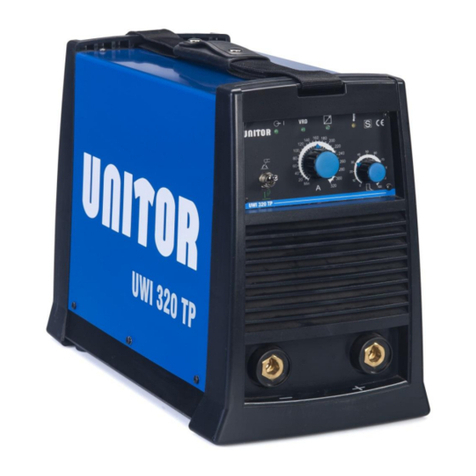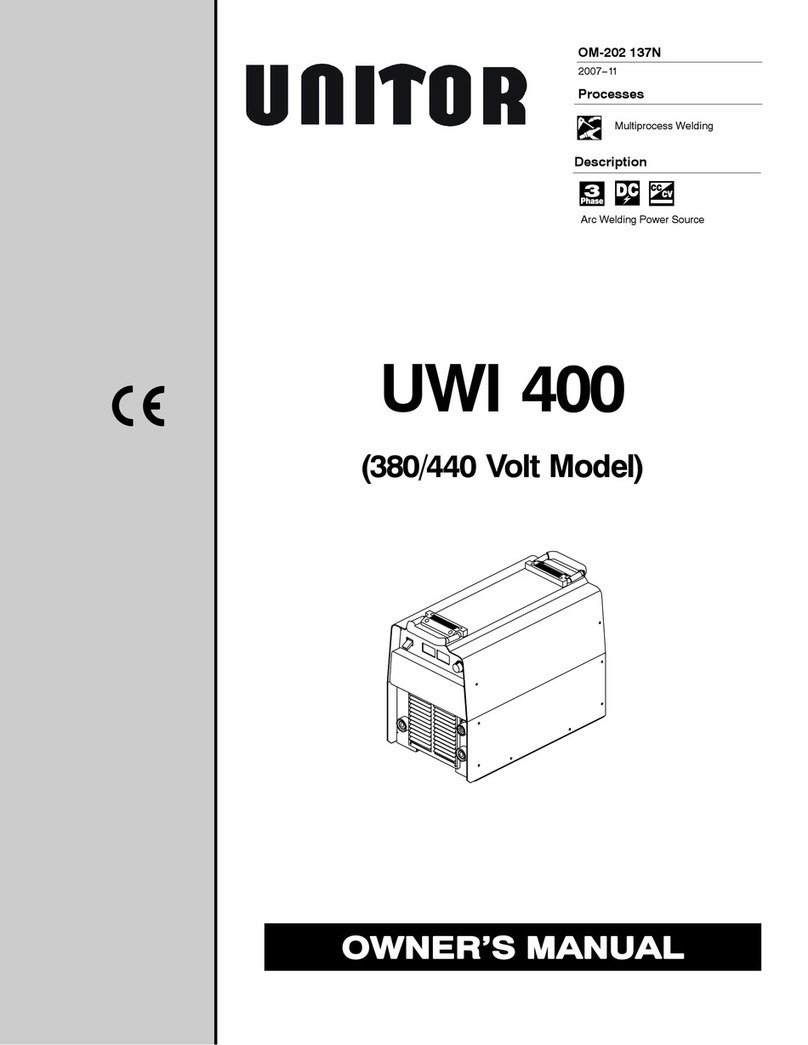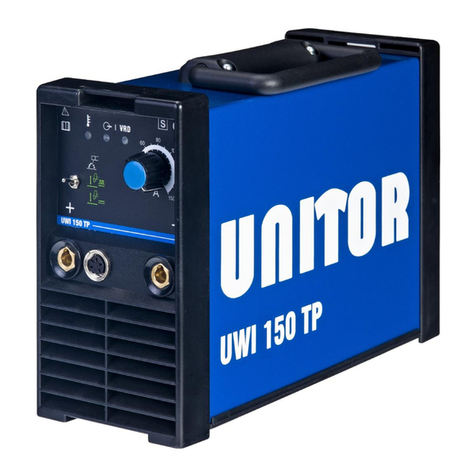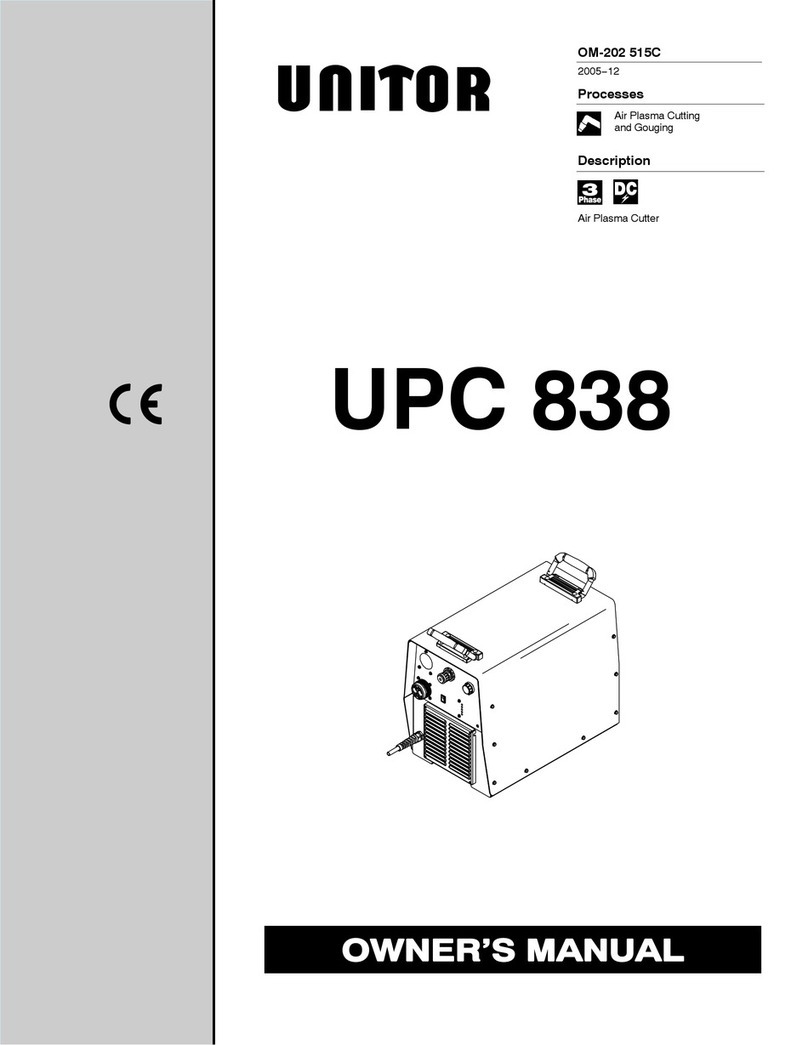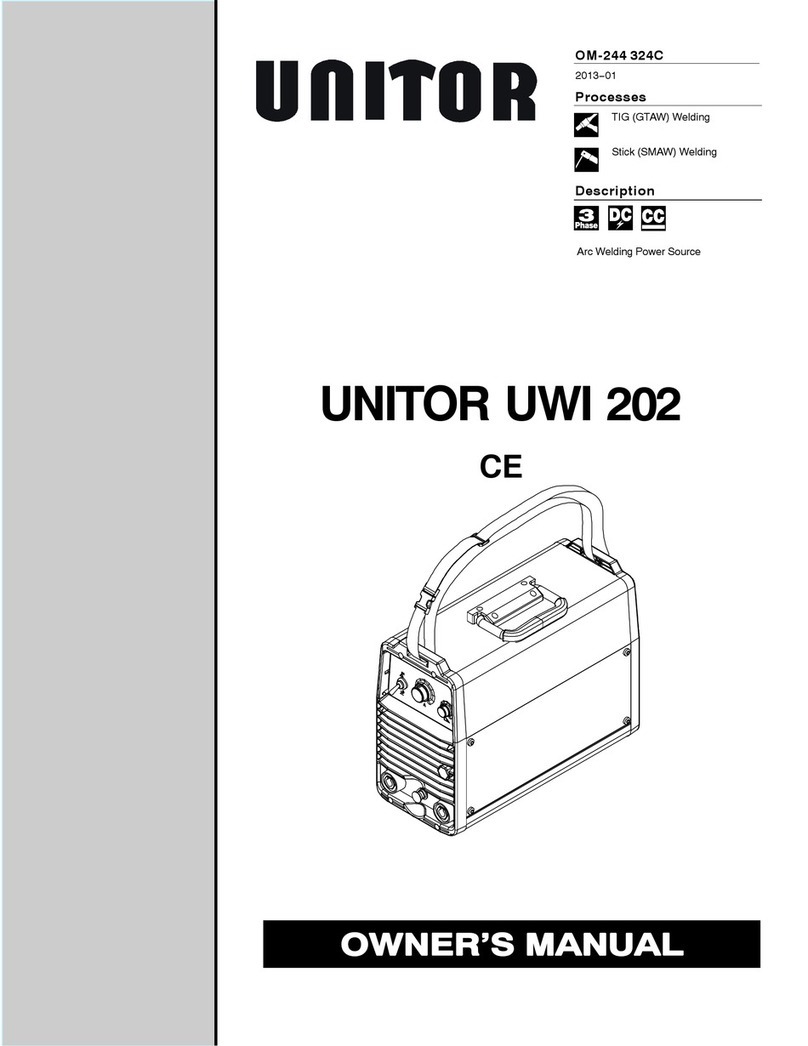7. SAFETY INSTRUCTIONS
All endangerments through plasma cutting are related with the process itself.
Endangerments may occur due to:
- High contact voltage
- HV ignition
- Electromagnetic interferences
- Heat and light radiation
- Gases, fumes and smoke
- Noise
- Hot metal and spatter
- Handling of pressure cylinders
The Plasma Cutting Machine has been developed in conformity with following standards:
• EN 60974-1 safety requirements for installations for arc welding and welding power sources
• EN 50199 electromagnetic compatibility
Before starting the Plasma Cutting Machine carefully read this Instruction Manual. Only advised
personnel are allowed to operate the plasma installation!
Endangerment due to high contact voltage
Warning! Before opening the plasma cutting machine the input power has to be disconnected
physically from the mains (unplug mains cable)!
Only advised personnel are allowed to carry out any repairs to the machine.
Attention! Connect the return lead clamp onto and earth the workplace before starting the
machine!
Important precautions:
Connect power source only to correctly earthed mains socket with proper connected protective earth
conductor.
Wear insulating protective clothing (safety shoes, leather apron, gloves), place torch on a surface
insulated from machine earth during breaks,
Keep and cutting area and plasma machine components dry and clean and follow the maintenance
recommendations strictly.
Working under elevated electrical endangerment
This plasma cutting machine in conformity with valid standards (EN 60974-1) can be used for
operation under elevated electrical endangerment. The design of the torch prevents electrical danger
when the torch is disassembled. Therefore the power source is marked with the S-sign and operation
under enhanced electrical endangerment is allowed.
Attention! Always follow the local safety rules!
Endangerment through high voltage (HV)
A HV-igniter starts the pilot arc. The HV-supply is cut-off automatically after pilot arc has struck.
Attention! Never touch nozzle or nozzle cap when power source is switched ON! HV-ignition may
establish electromagnetic fields and can influence heart pace-makers and electronic devices
Endangerment through electromagnetic interferences
The plasma cutting unit is in conformity with the conditions of the EN 50199 “Electromagnetic
compatibility”. This standard is valid for arc welding and related processes (plasma cutting) that come
in use in commercial and private fields.
Warning! Special precautions may be required if the plasma unit is used in private fields (for instance
screened cables etc.) The user takes the full risk when installing and using the machine and must
follow strictly these instructions.. If electromagnetic interferences are noticed the user is to contact the
producer to solve the problem.
